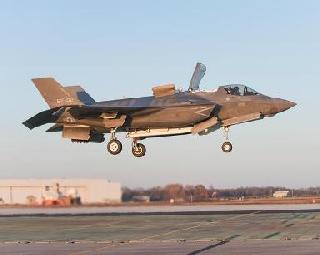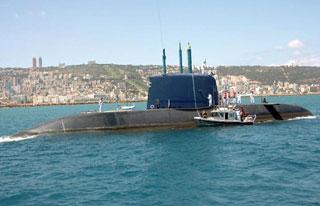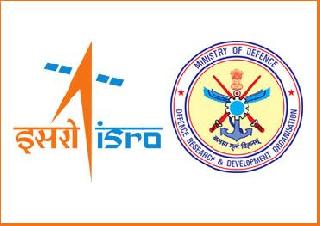
The F-35B making first vertical landing. A US Naval Air Systems photo
PATUXENT RIVER, US (BNS): Marking a step forward to induct the new generation Joint Strike Fighter in its aviation arsenal, the US Marine Corps has successfully test flown an F-35 aircraft in its short take-off and vertical landing (STOVL) variant.
The Marine Corps pilots achieved the feat by successfully flying the BF-2, a test variant of the fifth-generation fighter, at the Naval Air Station Patuxent River in Maryland, on January 6.
The aircraft achieved its first vertical landing and conversion back to normal mode, the Marine Corps said.
The F-35B is undergoing testing and evaluation during the programme's system design and development phase at Naval Air Station Patuxent River.
With this successful flight, the F-35 inched close to become the Marine forces' leading fighter aircraft by replacing the three existing fleet of aging fighters – the EA-6B Prowler, AV-8B Harrier and F-18 Hornet.
Amidst concerns over cost overruns and delivery delays, the Marine Corps pledged its support to the Joint Strike Fighter programme.
“Despite some recent concerns over performance, cost and schedule, the Marine Corps contends that it is dedicated to the success of this programme – and being able to operate and land virtually anywhere in the world while supporting the continuous tactical air missions the Corps demands,” the Marine Corps said in a statement.
It hoped that the new fighters would get initial operational capability by 2012-2013.
The F-35B, dubbed as the world's first supersonic, radar evading stealth fighter with short take-off and landing capabilities, is being developed by Lockheed Martin.
The company is producing three variants of the aircraft with the other two being the F-35A, the conventional take-off and landing variant, and F-35C, the carrier variant of the fighter.
 Previous Article
Previous Article Next Article
Next Article













The Indian Air Force, in its flight trials evaluation report submitted before the Defence Ministry l..
view articleAn insight into the Medium Multi-Role Combat Aircraft competition...
view articleSky enthusiasts can now spot the International Space Station (ISS) commanded by Indian-American astr..
view article